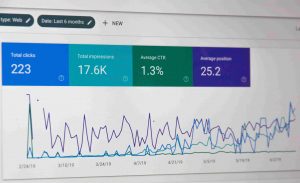A Comprehensive Handbook on Themes, Epics, User Stories, and Tasks
Structured adaptability might appear contradictory, especially when it comes to product development strategies. However, within the realm of agile development, this seemingly paradoxical concept is not only feasible but also highly effective. Agile development teams operate in short, iterative cycles, aiming to deliver value rapidly while incorporating valuable feedback from customers and cross-functional collaborators. This approach allows them to adjust plans dynamically, ensuring the creation of the best possible product experience. Thus, agility becomes the epitome of adaptability.
While agile methodologies do provide processes and principles to adhere to, they do not advocate for reactionary responses, backtracking, or overhauling existing work when confronted with new information. Instead, the iterative nature of agile empowers teams to embrace change continually. Some agile methods, such as Scrum, take a remarkably detailed approach to these practices, contributing to its widespread popularity. For certain agile teams, the more structure they have, the better, as it reduces uncertainty. Scrum, for instance, offers practical guidelines for structuring sprints, backlogs, teams, meetings, and various work elements.
In Scrum, these work elements are referred to as themes, epics, user stories, and tasks. Collectively, they form a framework for planning agile development from the strategic level down to the minutest technical details. This approach brings stability to the development process, ensuring steady progress towards goals while providing a reliable structure that can withstand incremental changes.
The beauty of this structured approach to work is that it transcends the confines of a specific agile method. It remains effective, regardless of the particular agile approach one adopts. If you’re curious about themes, epics, user stories, tasks, and their significance, this comprehensive guide offers clear definitions for each and valuable insights on how to integrate them cohesively to support your overarching objectives.
How Can I Structure Agile Development Work?

Before delving into the specifics of each term, it’s essential to grasp how they interrelate, forming a hierarchical structure. At the apex are themes, which are then broken down into epics, followed by user stories, and finally tasks. This hierarchical relationship means that each item is subordinated to the one above it (e.g., tasks are linked to user stories, user stories to epics, and epics to a theme). As a result, the process of organising your work should adopt a top-down approach.
At the core of this hierarchy lie product goals. Adopting a goal-first approach ensures that all agile development efforts are tightly linked to the overarching product strategy. This approach not only infuses your work with a sense of purpose but also fosters alignment across product teams. Themes or initiatives, in turn, dictate the broader areas of work that will facilitate goal achievement.
For instance, suppose one of your product goals is to enhance the number of active users on your app by a certain percentage within the next twelve months. In that case, you will identify themes of work that focus on increasing users in key areas and then further break down these themes into epics, user stories, and tasks. This meticulous breakdown ensures complete traceability back to the top-level goal. The visual representation below illustrates how these components fit together, complete with practical examples.

With this coherent framework in mind, let’s delve even deeper into the definitions and implications of each term.
What Are Agile Themes?
Themes play a pivotal role in bridging the gap between your strategic vision and the tangible work executed by your team. By encapsulating major areas of investment aligned with business and product goals, themes facilitate the prioritisation and delivery of maximum value to both customers and the organisation. Agile themes are strategically designed to harmonise with planning periods, such as quarters or years, enhancing their effectiveness in guiding product development efforts.
Agile Theme Definition
In the context of agile development, themes are regarded as strategic initiatives that outline the overarching direction for the development work necessary to achieve your objectives. Serving as the most substantial unit of work in agile, themes encompass all related epics, stories, and tasks, providing a comprehensive umbrella under which the entire development process takes shape.
How To Use Agile Themes
One of the key objectives of agile development is to create a strong connexion between the work of the development team and the overall product and business goals. This alignment ensures that every effort contributes directly to achieving the desired outcomes, enhancing the value delivered to both customers and the organisation.
Strategic Focus: Defining Key Areas for Agile Development Work
In the realm of agile development, it is crucial to identify and define strategic areas of focus. These areas serve as the guiding pillars for the development process, ensuring that resources and efforts are channelled into the most impactful endeavours that drive progress towards the ultimate goals.
Categorizing Work: Organizing Related Efforts into Broad Themes
To enhance efficiency and clarity, related bodies of work are organised into broad categories or themes. This structuring allows for better management and understanding of the development process, promoting smoother collaboration and facilitating cohesive progress towards shared objectives.
What Are Agile Epics?
In the realm of agile development, epics serve as a crucial organisational layer, bridging the gap between broader themes and individual user stories. Visualize them as categories or parents that house related user stories. By incorporating epics into the process, you can effectively advance your strategic concepts while simultaneously delving into the definition and planning of more tactical work.
Agile Epic Definition
In the agile development context, epics represent substantial bodies of work that often comprise multiple user stories. They articulate major product requirements or define critical areas of functionality that shape the overall user experience. Due to their scale and complexity, epics are commonly delivered across multiple releases, allowing for a systematic and incremental approach to achieving the envisioned product goals.
How To Use Agile Epics
When faced with large functionality updates that exceed the scope of a single sprint, it becomes imperative to break them down into manageable components. By doing so, development teams can handle these substantial tasks in more achievable increments, ensuring steady progress towards the ultimate objective.
Coherent Grouping: Bringing Together Smaller User Stories Under Thematic Functionality
In certain cases, smaller user stories might not directly relate to each other, but they share a common thematic functionality. To enhance organisation and efficiency, these user stories are grouped together under a cohesive umbrella, such as UI improvements, streamlining the development process and fostering a coherent approach to implementation.
Prudent Planning: Strategizing Large Updates in the Absence of Defined User Stories
In situations where specific user stories are yet to be fully defined, it is prudent to plan and prepare for significant updates proactively. By laying the groundwork and creating a roadmap for these larger improvements, development teams can be better equipped to incorporate the emerging user stories seamlessly, ensuring a smoother and more effective development journey.
What Are User Stories?

As you progress down the hierarchical structure, there is a noticeable shift from strategic and organisational elements of work to more tactical components, such as user stories. These user stories play a pivotal role in transforming your goals, themes, and epics into tangible, day-to-day development tasks, offering a clear and practical roadmap for implementation.
In the majority of cases, multiple user stories are grouped together under epics, allowing for a cohesive and systematic approach to handling related tasks. This organisation not only streamlines the development process but also ensures that the broader vision and objectives are consistently translated into executable, user-focused endeavours.
Agile User Story Definition
In the realm of agile development, user stories serve as concise descriptions of discrete product functions or benefits that generate fresh value for customers. Ideally, a user story should be achievable within a single sprint, promoting a rapid and incremental development process.
Essentially, user stories represent product features, but they are skillfully rephrased from the user’s perspective. The primary aim is to articulate how users will encounter and interact with the new functionality, as well as highlighting the specific benefits it brings to them. This user-centric approach ensures clear and compelling communication of the product’s value proposition, fostering a more customer-focused and impactful development journey.
How To Use User Stories
When conceptualising new or improved functionality for your product, consider aspects related to appearance, capabilities, and other relevant factors. It is crucial to approach this process from the customer’s viewpoint, envisioning how the proposed changes will directly impact and enhance their experience. By adopting a customer-centric approach, you can better align your development efforts with the needs and preferences of your target audience, leading to a more successful and satisfying product outcome.
Agile User Story Example
User stories typically adhere to a structured format:
“As A [TYPE OF USER], I want to [perform some task] so that I can [achieve some goal].”
For instance, let’s consider the scenario of integrating Google Maps into a cycling app. A user story for this feature could be:
“As a cyclist, I want to track my ride on Google Maps so that I can record my distance and follow directions simultaneously.”
As you craft user stories, your team may engage in user story mapping, a valuable exercise that visualises the flow of customer interactions with your product. Through user story mapping, agile teams can gain insights into the user experience across various product elements. This approach provides a satisfying method to organise and prioritise work, moving away from a single, flat backlog and embracing a more comprehensive and user-centric perspective.
What Are Agile Tasks?

Tasks form the final tier of the hierarchy, representing the smallest unit of work in agile development. While not all scrum teams incorporate tasks, some find that detailed user stories suffice on their own. However, for intricate and complex features, tasks prove to be valuable additions, facilitating a more granular approach to project management and execution.
Agile Task Definition
Tasks in agile development are discrete and technical units of work assigned to the team. They embody the specific development tasks necessary to fulfil and complete a user story. These tasks break down the user story into actionable steps, providing a clear roadmap for the team to effectively execute and deliver the intended functionality.
How To Use Agile Tasks
When crafting your user stories, it is essential to articulate the specific technical tasks that collectively contribute to their realisation. By delineating these distinct components, you provide clarity and direction for the development team, enabling them to address each aspect effectively.
As you structure your agile development process, remember the importance of splitting up the technical work among the members of your development team. This collaborative approach fosters efficiency and expertise, ensuring that each team member contributes their unique skills to the successful completion of the user story.
Throughout the agile development journey, it is crucial to keep your product goals at the forefront of your planning and decision-making. Whether it’s themes, epics, stories, or even tasks, maintaining a strong sense of purpose and continuity will guide your efforts towards accomplishing the most significant and impactful work that drives your product’s success.
What Is The Relationship Between Epics, Themes, User Stories, Tasks, Features
The interplay between features, epics, themes, user stories, and tasks follows a hierarchical structure. Features and epics encompass the broader functionality of a product or system, defining its overall capabilities. Themes and user stories, on the other hand, serve as organising elements, breaking down the functionality into more manageable segments of work.
User stories and epics are further deconstructed into specific, actionable items through the use of tasks. These tasks offer a granular level of detail, allowing for the assignment of individual responsibilities to team members. This hierarchical relationship ensures a cohesive and systematic approach to product development, enhancing efficiency and collaboration within the agile development process.
Epic, Themes, User Stories, Tasks, Features Example
Let’s illustrate the functionality of an online shopping system using a feature, epic, theme, user story, and task:
Theme: Payment Options
This theme encompasses all the functionalities related to various payment options available on the website, such as credit card, PayPal, and cash on delivery.
Epic: Checkout Process
The epic entails all the functionalities tied to the process of checking out and making purchases on the website, including tasks like entering shipping information, selecting a payment method, and reviewing the order.
Feature: Add to Cart
This feature empowers users to add items to their shopping cart effortlessly while browsing the website.
User Story: Convenient Credit Card Payment
“As a user, I want to be able to pay for my order with a credit card, ensuring a swift and hassle-free checkout experience.”
Task: Integrate Credit Card Payment Gateway
This task involves the seamless integration of a credit card payment gateway into the website. Assigned to a specific developer or team, it enables users to pay for their orders using a credit card securely and efficiently.
Epic Comparisons
Features Vs Epics
Features and epics play essential roles in Agile development, describing the functionality of a product or system. However, they exhibit distinct characteristics:
| Features | Epics | |
| Scope | Features define specific functionalities or capabilities of the product or system. | Epics, on the other hand, encompass larger and more comprehensive functionalities. |
| Level of Details | They are relatively smaller in scope, addressing particular aspects of the overall product. | They are broader in scope, often spanning multiple features or even entire sections of the product. |
| Timeframe | Features are more focused and granular, making them easier to implement and manage within a sprint. | Epics may require multiple sprints to complete due to their complexity and the extensive work involved. |
| Prioritization | Features are prioritized based on their importance to the end user and the overall goals of the project. | Epics are prioritized based on the business value they provide. |
| Alignment | Features are aligned with the overall goals of the project. | Epics are aligned with the project’s vision and strategic objectives. |
In summary, while both features and epics contribute to defining the product’s functionality, they differ in scope and depth, with features being more targeted and epics encompassing larger and more intricate aspects of the product.
Themes vs Epics
Scope: In Agile development, a theme constitutes a collection of features or epics grouped together based on a shared goal or functional area. Themes serve to effectively organise and prioritise the necessary work, ensuring alignment with the project’s overarching objectives. On the other hand, epics represent larger and more intricate features that cannot be completed within a single sprint. To manage their complexity, epics are broken down into smaller, actionable components, such as user stories.
Level of Detail: Themes are generally described in broader terms, facilitating the grouping of related functionalities, while epics are more specific in nature, defining particular functionalities or user needs.
Alignment: Themes align with the overall goals and objectives of the project, while epics are geared towards fulfilling the project’s vision and strategic objectives.
Prioritization: Themes are prioritised based on their significance to the project’s overall goals and how well they align with its objectives. On the other hand, epics are prioritised based on the business value they provide.
How Do I write Great Tasks, Themes and Initiatives?

1. Define Your Goal
In the context of Agile development, themes are akin to strategic business objectives presented as items. They offer essential business context for informed decision-making and provide a guiding framework to steer your organisation effectively. These themes significantly influence the work items designated to various value streams, playing a crucial role in shaping the direction of your endeavours.
To illustrate this concept further, let’s consider an example of an Agile theme. Imagine you aim to venture into a new market, such as the project management software industry. In this case, “Penetrating the project management software market” becomes your top-level Agile initiative or theme. Now, the challenge lies in breaking down this overarching theme into actionable and concrete steps to ensure its successful realisation.
2. Divide Your High-Level Initiatives
Agile epics or projects play a vital role as the foundational components of the aforementioned initiatives and themes. They offer more specific and measurable objectives, allowing clear visibility into their contributions towards achieving the primary goal. Let’s revisit the example of “penetrating the project management software market” as our main initiative and further break it down into two epics or projects:
- New Features: Develop a New Module for Workflow Performance Reports: This epic aims to introduce a new module specifically designed for project managers, enhancing the software’s functionality to cater to their needs.
- Enhance Current Features: Tailor Existing Functionalities for Project Managers: This epic focuses on optimising and augmenting the current features to better suit the requirements of project managers.
These Agile epic examples encompass several tasks, work items, or user stories that will be tackled over an extended period. Depending on their scope and complexity, they may evolve into more extensive projects. Regardless of the nomenclature, the crucial aspect lies in ensuring that these epics or projects remain closely tied to the main theme or initiative and contribute to the overarching goal of penetrating the project management software market.
3. Break Down Into Individual Deliverables
In Agile, breaking down projects or epics into smaller, manageable requests that move swiftly through your workflow is essential. This level represents the lowest tier of your work breakdown structure, where you encounter terms like user stories (in software development), deliverables (in marketing), or simply tasks.
Let’s revisit the example of penetrating the project management software market as our Agile theme/initiative. As an Agile epic, we’ve chosen “Develop a new module for workflow performance reports.”
Now, the next step is breaking down this epic into actionable and small tasks. Some potential tasks could include:
- PM Tools Research: Conduct research to identify and assess project management tools and technologies.
- New Features Design/Concept: Creating the design and conceptual framework for the new module, aligning it with user needs and preferences.
- New Features Development: Implementing and coding the new module, ensuring it aligns with the project’s objectives and requirements.
By completing these smaller tasks, you will progress towards successfully achieving the project’s objectives. Likewise, completing the overall initiatives or epics will propel you closer to accomplishing your overarching goal of penetrating the project management software market.
Epic and User Story Writing Tips

When crafting your epics and user stories, there are seven essential factors to take into account.
The Size of The Stories
As the Scrum Guide does not specifically address user stories, there is no standardised rule regarding their size. However, it is generally understood that user stories should be small enough to be completed within a single sprint. With a deeper comprehension of Scrum and improved team dynamics, the team becomes more adept at estimating the size of user stories and determining the number of stories they can effectively accommodate in each sprint.
The Perspective
When crafting user stories, it’s crucial to maintain a perspective aligned with an end user or customer. The widely utilised template for user stories reflects this approach: “As a [X]
The success of creating effective user stories lies in carefully considering the perspective of the end user throughout the writing process. By consistently adhering to this perspective, you can ensure that the user stories remain user-centric and focused on delivering valuable outcomes.
The Author
The product owner holds the responsibility for maintaining the product backlog of Agile user stories. However, the specific individual tasked with writing these stories may not be of paramount significance. In an ideal setting, all team members should possess the capability to write user stories effectively. This fosters a collaborative and versatile environment, where each team member can contribute their valuable insights to the user story creation process.
Simplicity Is Key
Clarity and simplicity are universal desires when it comes to English statements, and the same applies to user stories. The most effective stories are those that leave no room for ambiguity. To achieve this, ensure your user stories are easy to understand, keeping them straightforward and concise. Remember, user stories should follow the “who-wants what-why” format, excluding the “how” aspect. The technical implementation is best left to the teams to decide, empowering them to make informed and efficient decisions.
Granularity
User stories must possess the necessary granularity for the team to undertake implementation. Continuously refining the stories is essential until they are fully prepared for implementation. This involves breaking down epics into smaller, more manageable stories. Additionally, achieving readiness entails ensuring the team shares a common understanding of the user stories targeted for the current sprint. This shared comprehension facilitates smoother collaboration and enables the team to work cohesively towards accomplishing their goals.
Accessibility
Ensure that your user stories remain visible and easily accessible to the entire team. The product backlog, a dynamic artefact, plays a crucial role in conveying the product vision, which the team must align with. Access to the product backlog and user stories facilitates seamless implementation and sprint planning. A practical and effective approach is to display the user stories of the current sprint on a wall using sticky notes, posters, paper cards, or any method that suits the team’s preferences. This promotes collaboration, fosters transparency, and enhances overall team cohesion.
Go Further
Throughout our discussion, we’ve covered various aspects of user stories, including their definition, breakdown, and techniques for crafting more effective ones. However, despite all this information, I want to emphasise the importance of not solely relying on user stories as the sole means of understanding and communicating requirements. While user stories are valuable, it’s essential to adopt a holistic approach, incorporating additional methods and tools to ensure a comprehensive understanding of project needs and objectives. A diverse set of techniques will enable a more robust and well-rounded development process, leading to more successful outcomes.
Tips For Managing Your Agile Development Structure
Now that you have gained insights into how themes, epics, features, stories, initiatives, and tasks function within Agile project management, the question arises: how can you successfully implement this structure in your organisation? Here are some essential considerations:
- Embrace Adaptability: At the core of Agile lies adaptability. Tailor the structure to suit your organisation’s unique needs. If something isn’t working, don’t hesitate to react promptly and make necessary adjustments.
- Train Your Teams: Invest time in training your staff on this specific Agile work structure. It becomes truly effective when teams comprehend the various components and how to operate within them.
- Utilize Tools and Technology: Optimize the adoption process by investing in top-notch tools and technology. Seek software solutions that facilitate the setup of your Agile work structure and streamline project management throughout the entire development life cycle.
By prioritising adaptability, educating your teams, and leveraging suitable tools, you’ll lay a solid foundation for successfully integrating the Agile structure into your organisation’s project management processes.
FAQ
What Are Themes In A User Story?
Themes and epics typically cannot be accomplished within a single sprint, necessitating their division into smaller, more manageable user stories. These user stories, in turn, are further broken down into groups of related tasks. Epics are delivered over multiple releases to accommodate their complexity. Interestingly, even small user stories from different epics can share common characteristics, forming a collection known as a theme. Themes enable the team to identify and address interconnected user needs across various epics, promoting a cohesive and user-centric approach to development.
Are Themes And Epics The Same?
Epics are frequently broken down into smaller, more manageable units of work, known as user stories. In terms of level of detail, themes are generally described in broader and more encompassing terms, grouping together related functionalities. On the other hand, epics are typically described in more specific and precise terms, defining particular functionalities or addressing specific user needs.
Is A Theme Higher Than An Epic?
User stories and epics are not the same thing; they actually exist on different levels within the hierarchy. User stories are more granular and specific, whereas epics are at a higher level and typically encompass larger and more time-consuming functionalities. Themes, on the other hand, are even higher in the hierarchy, providing a broader context for organising epics and user stories based on common goals or areas of functionality.
How Do You Write a Theme In Agile?
Aligning Development with Product and Business Goals:
- Establishing a cohesive connexion between the development team’s efforts and the overarching product and business objectives
- Identifying Strategic Focus Areas for Agile Development
- Defining key areas of emphasis to guide agile development work in line with strategic priorities.
- Categorizing Related Work into Broad Themes
- Organizing interconnected bodies of work into comprehensive and distinct categories for streamlined management and implementation
Overview
This comprehensive handbook serves as your invaluable companion in the world of project management. Armed with a clear understanding of Themes, Epics, User Stories, and Tasks, you now possess the tools to navigate the complexities of project planning and execution with confidence. Remember, effective communication and collaboration are key to success. Embrace the power of these fundamental building blocks, and watch your projects thrive. May this newfound knowledge empower you to create remarkable outcomes and drive your endeavours towards unprecedented achievements.
If you’ve enjoyed this post, we’d recommend diving into the following other posts in this Agile series:
- An Introduction to The Agile Methodology
- Themes, Epics and User Stories – The Core Components Of Agile
- Embracing Agile Team Dynamics
- What is SAFe Agile and Why Should I Use It?
- What is Waterfall Development?
- What is Lean Development?
- What is Scrum?
- A Deep Dive Into Epics
- Exploring The Power of User Stories
- How Can I Use Personas?
- Decoding Agile Estimation (Story Pointing)
- Agile Transformation: How Can My Business Start Using Agile?
- The Spotify Approach To Agile Development
- What Is Agile Portfolio Management?
- Agile Glossary
- Agile Statistics







